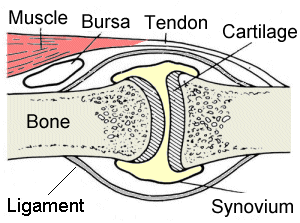

Image credit: https://knoji.com/images/user/celllulite%20diagram.jpg

WHAT is the fate of
mesenchymal stem cells?
Mesenchymal Stem Cell Differentiation
-
Mesenchymal stem cells differentiate into many different cell types that will eventually become connective tissues such as:
-
Bone, cartilage, muscle, tendon, ligament, adipose
-
-
Ligaments join one bone to another.
-
The elasticity of the fibrous ligaments allows them to change shape and lengthen under stress and then return to their original shapes.
-
Tendon usually connects muscle to bone.
-
All tendons share basic structural components and majorly work with muscle to move bones.
-
Cartilage is present in the rib cage, the ear, the nose and also part of the joints between bones, which is specifically called articular cartilage.
-
Articular cartilages have no blood, lymphatic or nerve supply so they have very limited self-repair capability.
-
Adipose tissue is another name for body fat, which is a loose connective tissue.
-
It functions to store energy and insulate the body
-
Muscle is a soft tissue that functions to produce force and motion.
-
There are 3 types of muscle, though only skeletal and smooth muscles are derived from MSCs:
-
Skeletal - connected to tendons, responsible for locomotion
-
Smooth - found in internal organs, called "involuntary" because they contract without you thinking about it
-
Cardiac - involuntary like smooth muscle, but found only in the heart, similar structure to skeletal muscle
-


